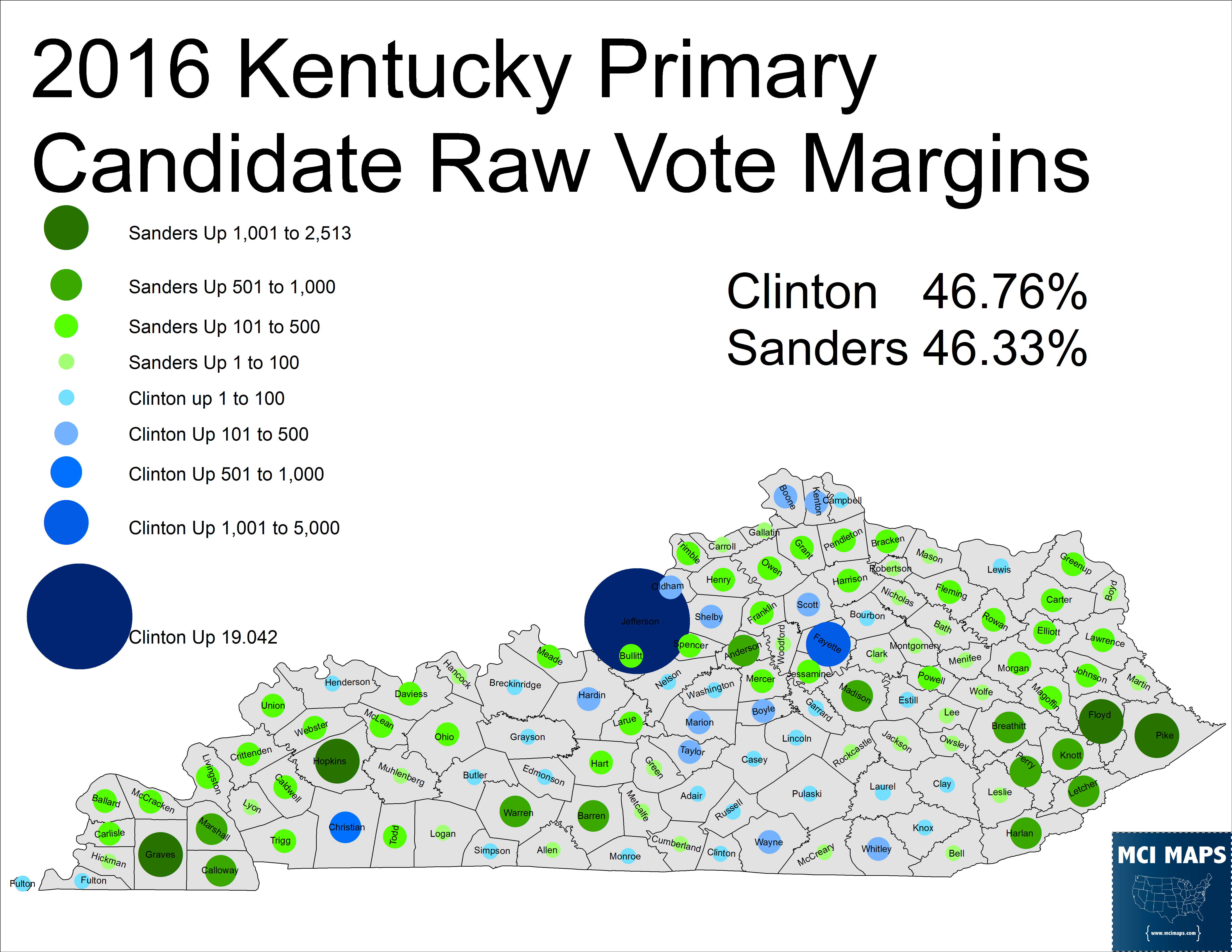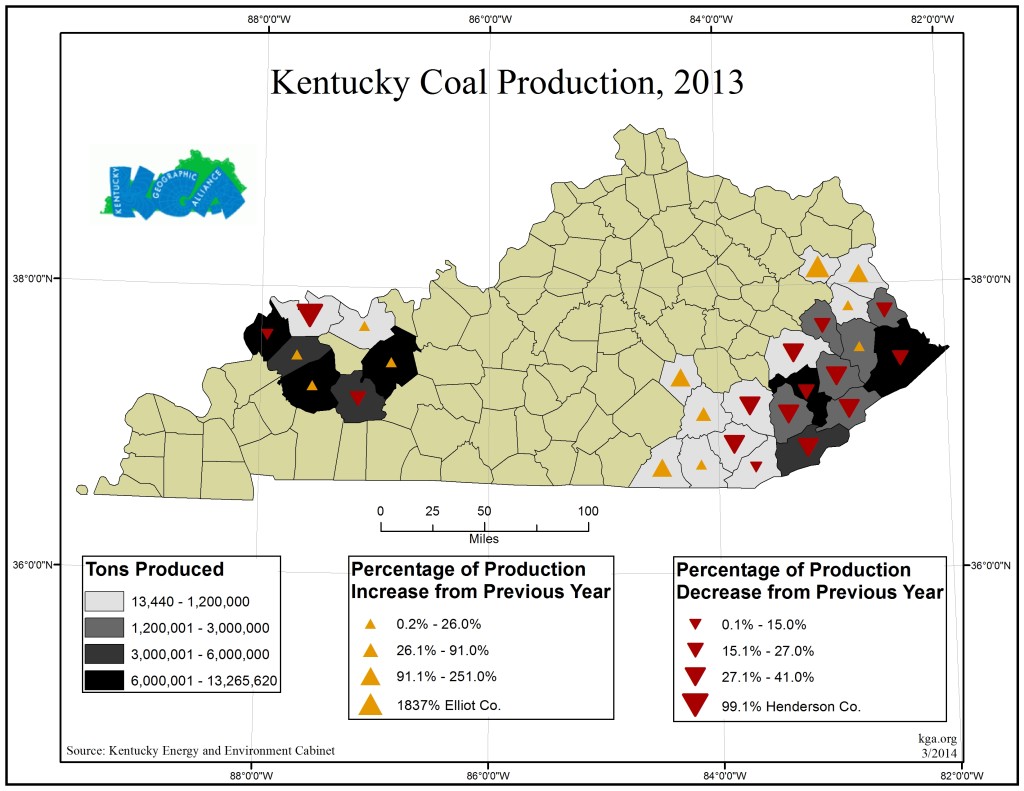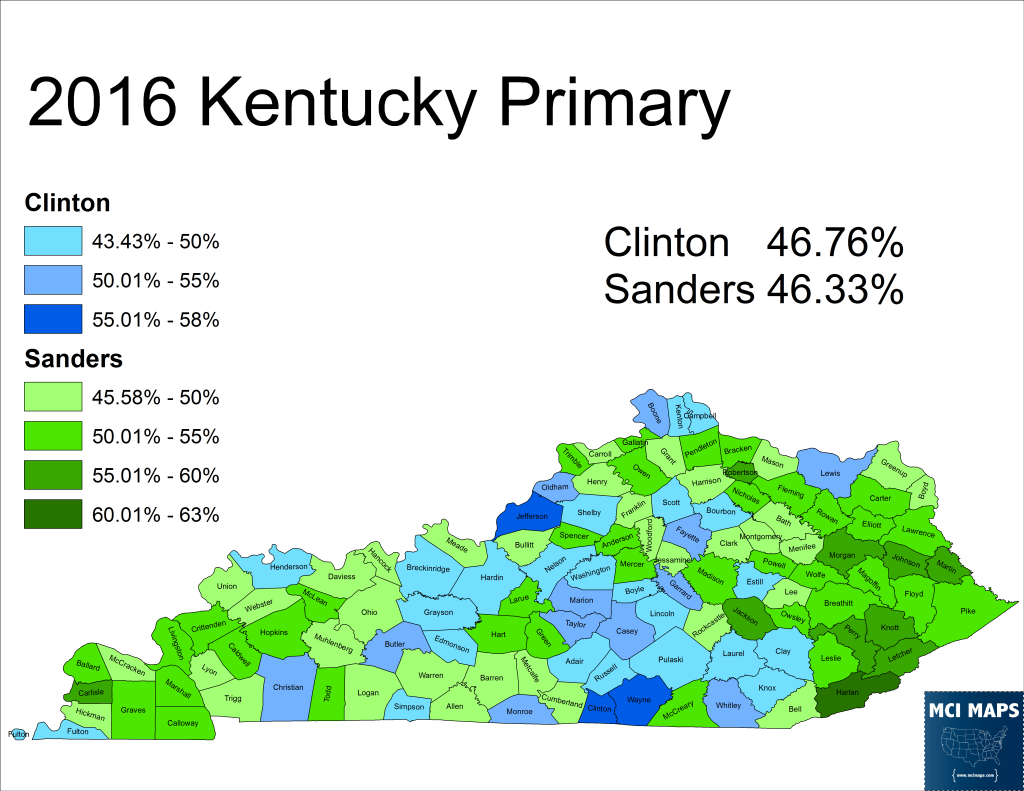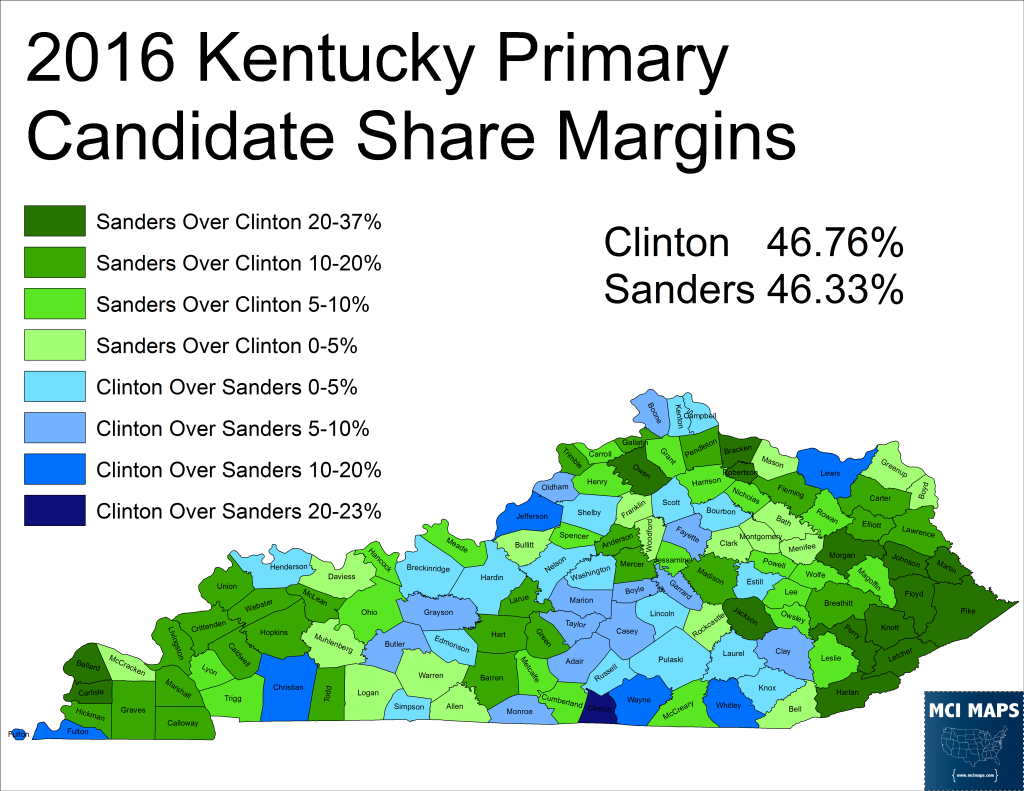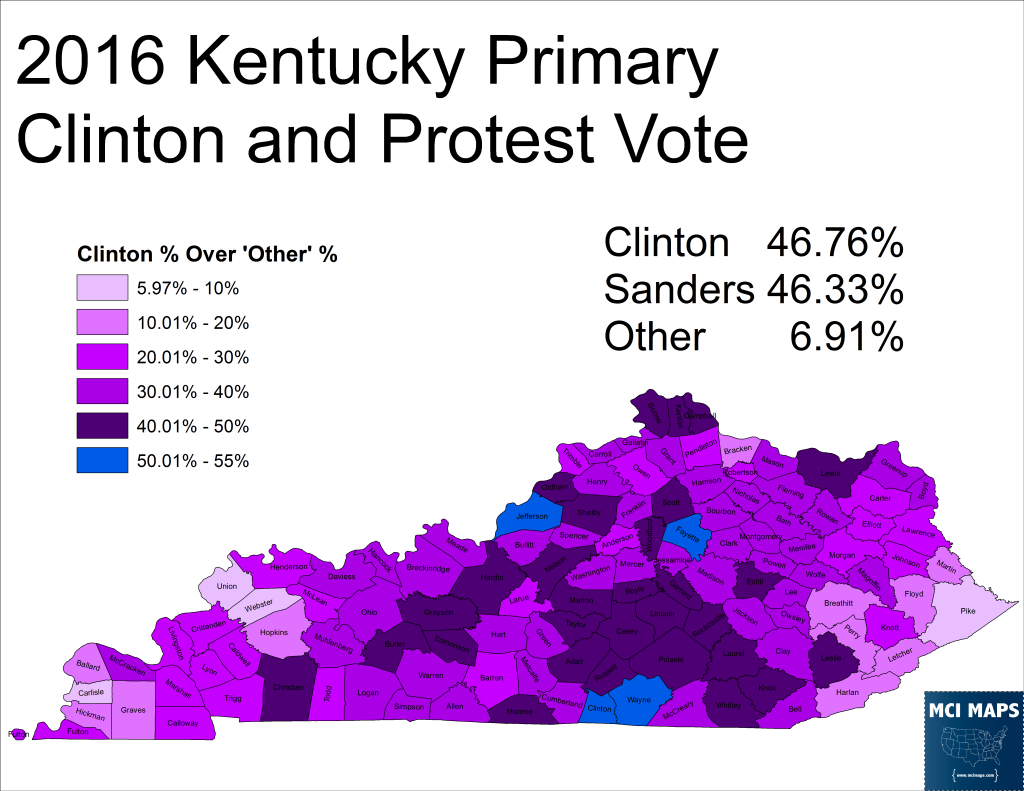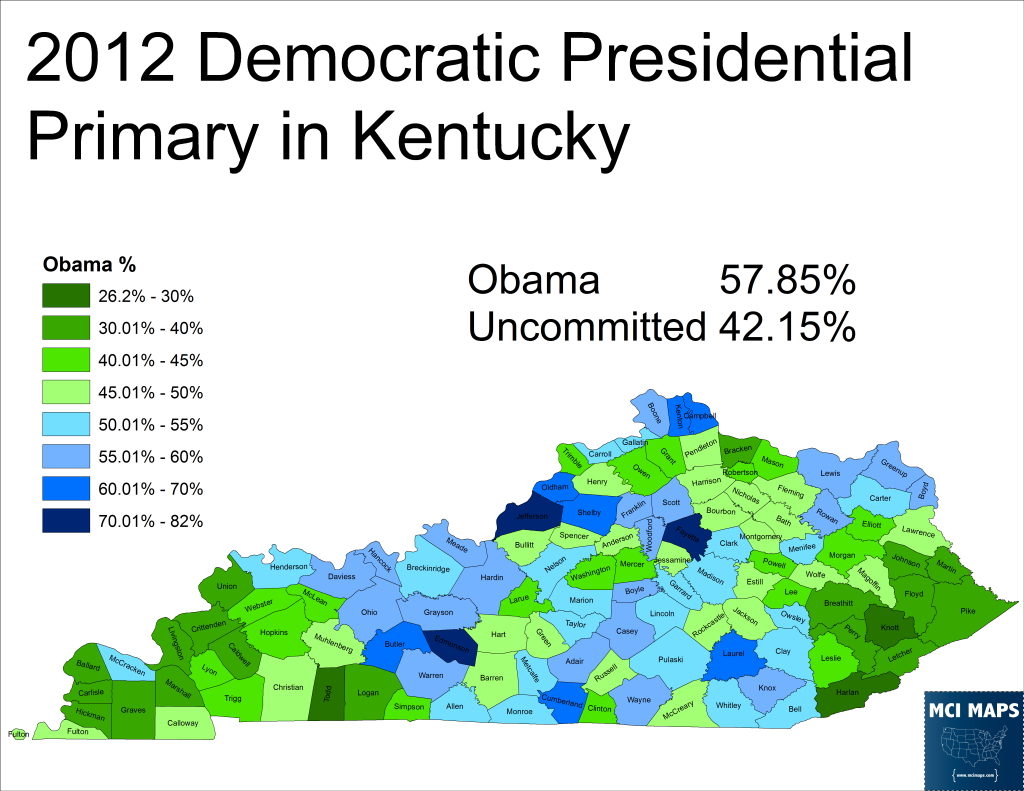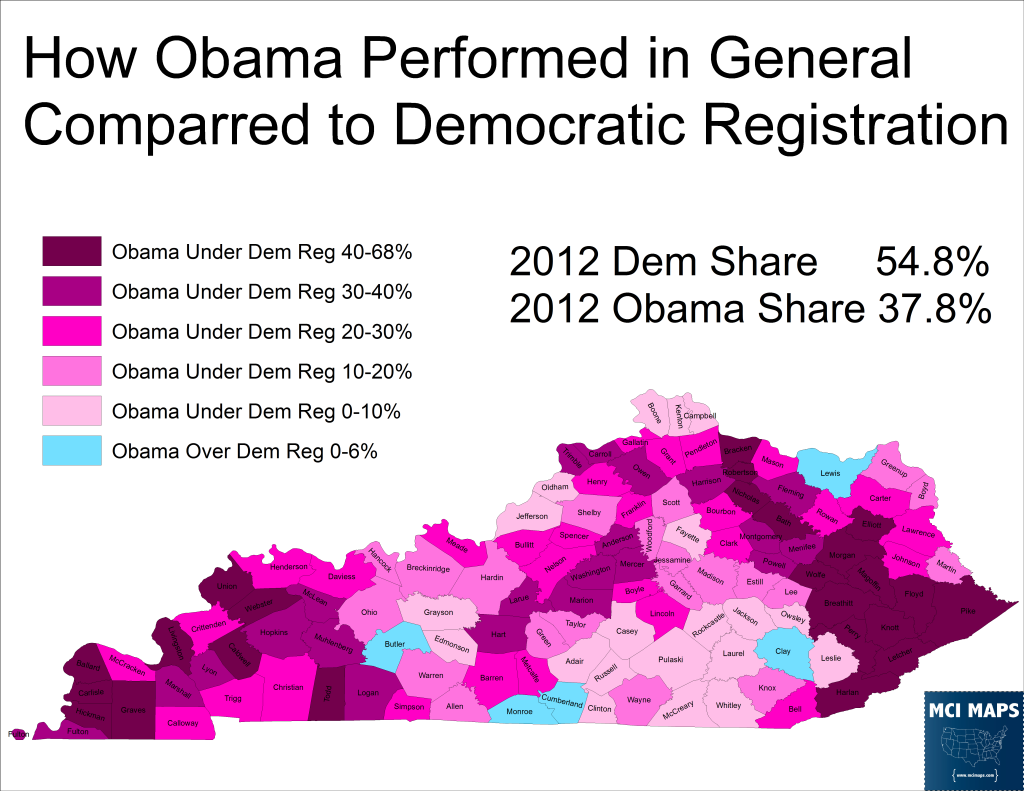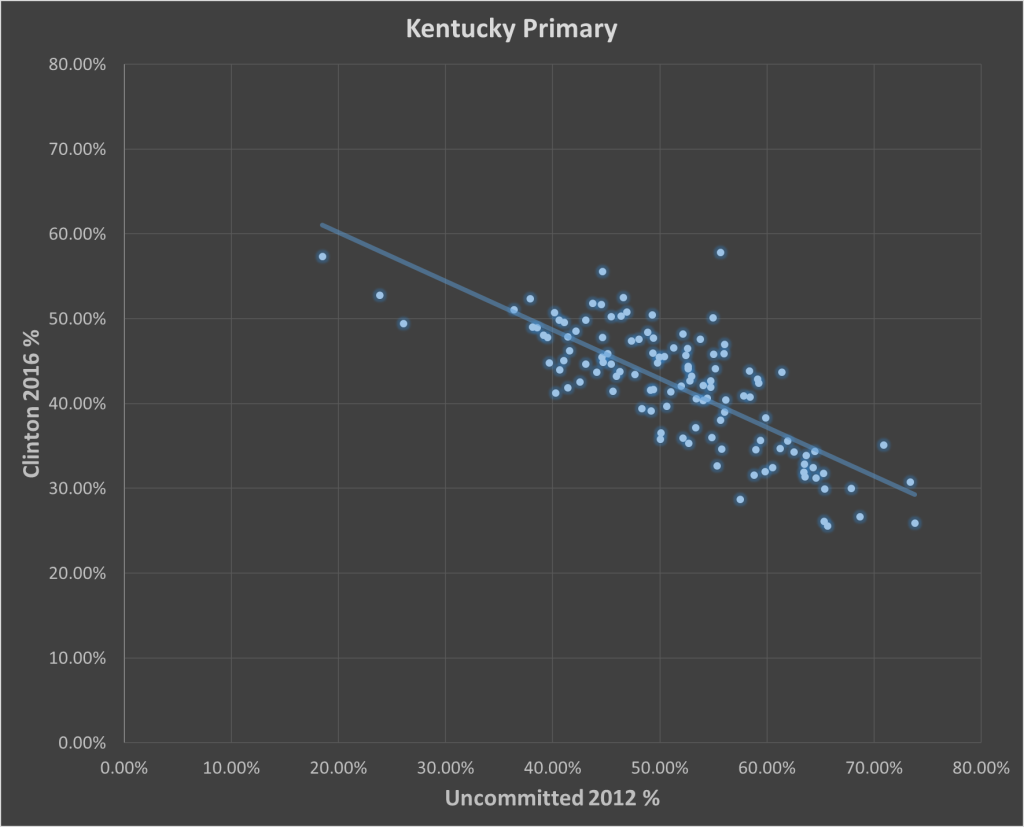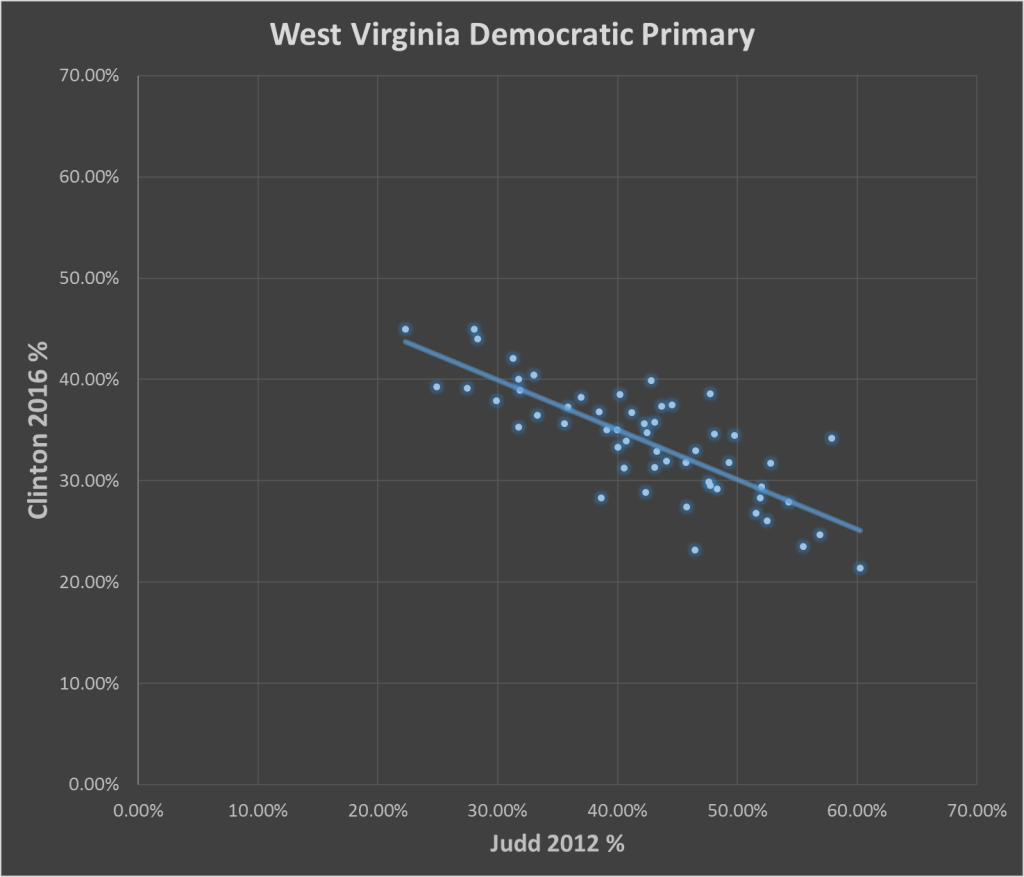On Monday I wrote that Kentucky’s Democratic Primary could be a repeat of West Virginia. When Clinton lost West Virginia last week, we saw a large share of conservative Democrats back Sanders despite their intentions to vote for Trump in the fall. Much of this vote was tied to coal and the region’s economic dependency on it. With Clinton running to continue Obama’s legacy, the coal communities are very hostile to Clinton and many voted for Sanders despite the Senator’s liberal energy positions. It was likely the same scenario would play out in the coal counties of Kentucky this time around. For Clinton, her only chance to win the primary was win big outside the coal region, specifically in populated areas like Louisville and Lexington to offset expected large losses in the coal regions of the state.
Clinton managed a razor-thin win in the Kentucky Primary. But sure enough, she lost the coal regions of the state to Sanders.
Sander’s won the eastern and western coal regions with modest percentages in the 50s. However, the gap between Sanders and Clinton was much higher thanks to a larger protest vote in the coal region. In the coal counties, a large share of the vote was cast for minor candidates and the option of “uncommitted.”
With the larger protest vote in that region, the gap between Clinton and Sanders was actually fairly large despite Sanders barely crossing 50% in many of those counties.
In two West Virginia counties, Clinton actually came in third behind the combined protest vote. That did not happen to her this time. However, she only modestly outpaced the protest vote in the coal counties, similar to what happened in West Virginia.
Clinton’s performance in the coal counties gave her a major deficit to overcome in order to win. However, she won the major population centers. In my preview I said she had to win big in Jefferson County, the home to Louisville, and do well in Fayette County, the home of Lexington. Fayette, home to the University of Kentucky, could have easily been a Sanders county. However, Clinton won it and had a solid margin in Jefferson. Looking at the results map by raw vote margin shows how Clinton managed to win.
Clinton’s huge margin in Jefferson and Fayette were crucial to offsetting the loses in the coal counties. In addition, Clinton doing well in the North Kentucky counties by Cincinnati and the mid-Kentucky region were crucial to her win. In my preview I also stated Jefferson needed to be around 25% of the total Democratic vote cast, and sure enough it was 24.6% of the entire statewide vote.
Closed Primary
Considering the margin of Clinton’s win, the primary being closed no doubt helped. However, the closed primary only helps so much in that region due to such a large share of the registered Democrats being very conservative. It must be reminded that Obama only got 58% in the 2012 Democratic primary and did worse than the Democratic registration in most counties in the 2012 General.
The closed primary kept independents out, but it kept conservative Democrats in. These conservative Democrats backed Sanders over Clinton in West Virginia to help protest her campaign and likely did so again this time. We have no exit polls for Kentucky, but just like West Virginia, we see Clinton did worse in a county as its’ 2012 protest vote increased. Kentucky counties that backed “uncommitted” in 2012 were not friendly to Clinton.
This correlation is similar to West Virginia, where Clinton did worse as counties were more supportive of Judd (the 2012 protest candidate) in that state’s 2012 primary.
The conservative Democratic regions that gave large protest votes against Obama in 2012 were hostile to Clinton in both states.
Low Turnout Likely Helped Clinton
One thing that likely hurt Clinton in West Virginia last week was that there was another major race on the ballot, a contentious gubernatorial primary. That primary, overwhelmingly won by a businessman in the coal industry, ensured a modest turnout. That race likely helped draw out conservative Democrats; a large share of whom are planning to vote Trump as the exits showed. These Democrats came out, voted for the coal man for Governor, some left the Presidential ballot blank, while others cast votes for minor candidates or voted Sanders as their method of protest. This could help explain why the protest vote was lower in Kentucky than West Virginia. While Kentucky had a US Senate Democratic Primary, there was a clear front-runner (the mayor of Lexington) and little interest to draw voters out, especially those more conservative. It is reasonable to assume that many conservative Democrats, unless being drawn out by assorted state/local primaries, opted to stay home, hence lowering the protest candidate vote and likely hurting Sanders since he receives a share of that protest.
Conclusion
Kentucky was a welcomed win for Clinton. A win or loss wouldn’t have changed the delegate math either way, but the win is good for her narrative and stops Sanders from claiming x-number of wins in a row. In the end, the coal regions of American have made it clear they do not like Clinton. However, thanks to the big cities like Lexington and Louisville, Clinton was able to add another state to her column.

